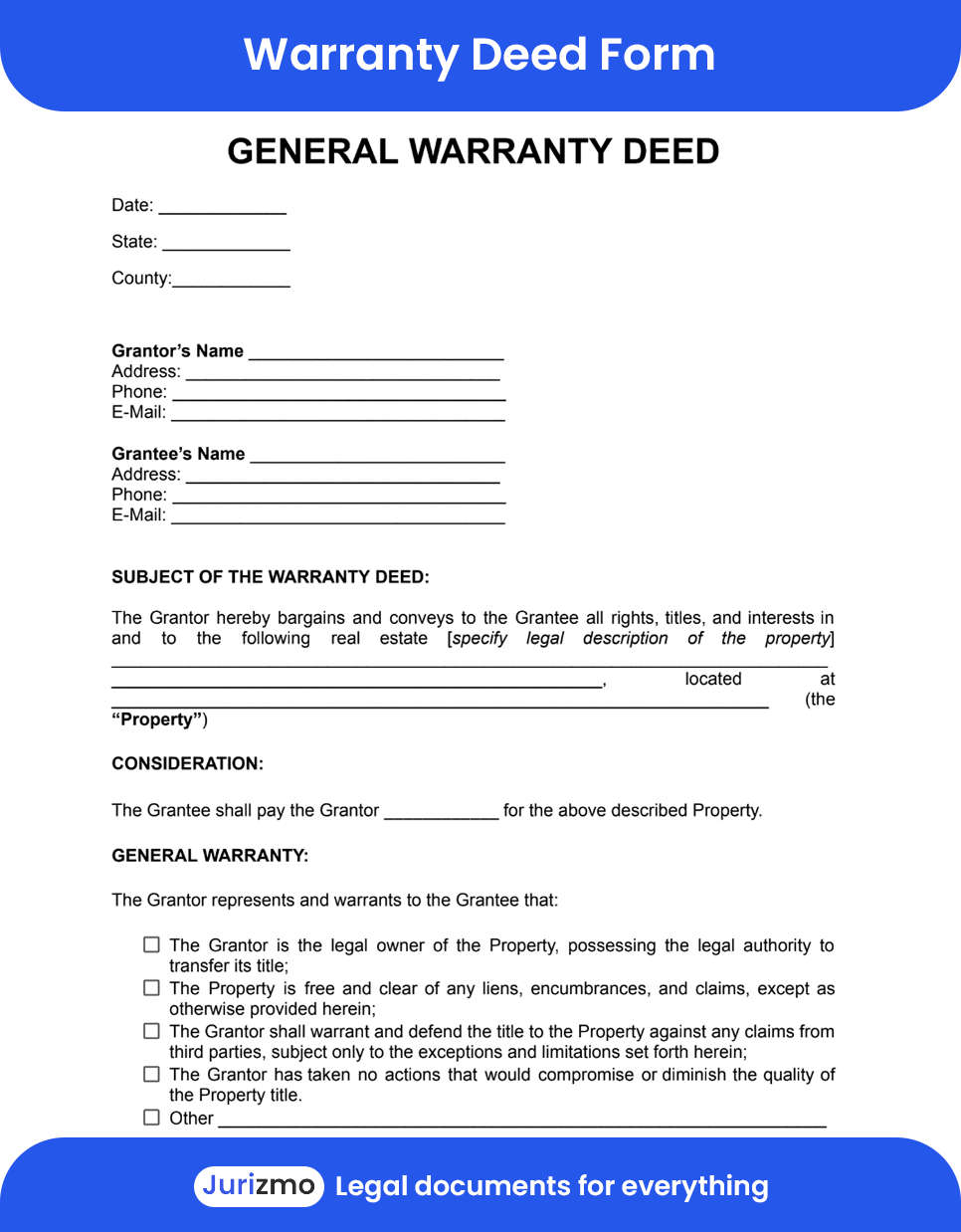When to Use Warranty Deed
Typically, general warranty deed forms govern real estate transactions in the following situations:
- Buying real estate: The buyer can request a printable warranty deed to verify the seller’s ownership rights.
- Selling real estate: As the seller, you need to guarantee full ownership rights. In such a case, a warranty deed sample is a valuable resource.
- Property transfer: A warranty deed is necessary when transferring property as a gift or inheritance. It attests that there are no liens or prior claims against the property.
- Business deals: Real estate properties are frequently involved in business negotiations or deals. Under these circumstances, a warranty deed template guarantees the transparent transfer of property rights.
Types of Warranty Deed Forms
The three primary kinds of warranty deed templates are described below. Every single one is fulfilling particular requirements:
- General warranty deed: This is the broadest type, giving the new buyer maximum assurance. It guarantees the buyer that the property is free of claims, liens, or encumbrances. Fill in the necessary details in a general warranty deed, download it for free, and use it for a particular situation.
- Special warranty deed: Unlike a general warranty deed form, this type only warrants that the title is clear for the period the seller actually owned the property. It offers no protection against title problems that could have arisen before their ownership.
- Quitclaim deed: The buyer has the least protection with this kind of deed. It conveys the seller’s ownership interest in the property, but it makes no guarantees about the title. Quitclaim deeds are commonly used for transfers between families.
The type of a sample warranty deed depends on the specifics of the transaction and how much risk the buyer is willing to accept. A general warranty deed example provides the greatest peace of mind but may not be needed for all situations.
Terms and Parties of Warranty Deed
In a blank warranty deed, there are two primary parties:
- Grantor: The one who sells the property and transfers ownership rights to another party.
- Grantee: The buyer of the grantor’s property.
A warranty deed example includes important legal assurances and guarantees from the seller to the buyer regarding the property title and ownership. Specifically:
- Warranty of seisin: The grantor warrants that they own the property being conveyed and have full rights to sell it.
- Covenant against encumbrances: This confirms the property is free and clear of any outstanding mortgages, liens, or other encumbrances, except as specified in the deed itself.
- Warranty of quiet enjoyment: The seller promises that the buyer’s ownership rights won’t be disturbed by any future claims or attempts by other third parties to take possession of the property.
How to Create a Warranty Deed
Follow these steps while creating a warranty deed:
- Find an appropriate form: Upload a warranty deed form (PDF or Word formats are available) that is compliant with your state laws.
- Include the necessary information: Fill out the deed form. Crucial items include the full legal names of the grantor and the grantee, a precise property description, and the consideration or sale price being paid.
- Notary acknowledgment: A notary public must sign the deed. This notarization officially validates the grantor’s identity and intent to transfer ownership.
- Recording process: Once signed and notarized, the completed warranty deed gets filed with the county recorder’s office where the property is located. Recording the deed ensures it becomes part of the public record, which protects the new owner’s claim.
To sum up, signing a warranty deed secures the transfer of the property ownership rights to the new owner by means of a public registry. After correctly recording the free printable warranty deed and filling it out with the necessary information, you can be sure that the agreement satisfies all legal requirements.
 Preview
Preview

 Preview
Preview
